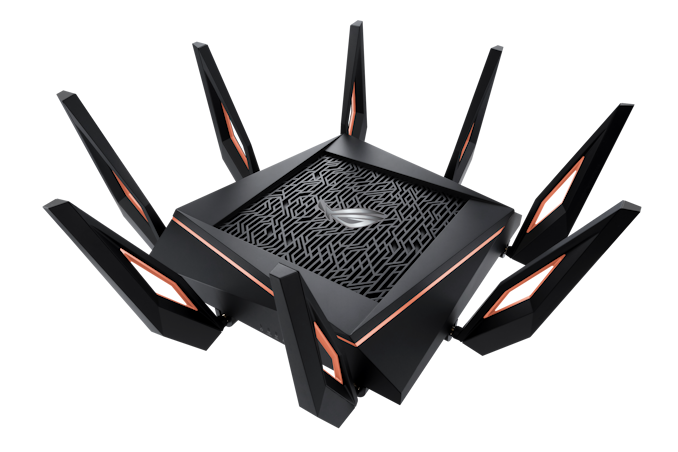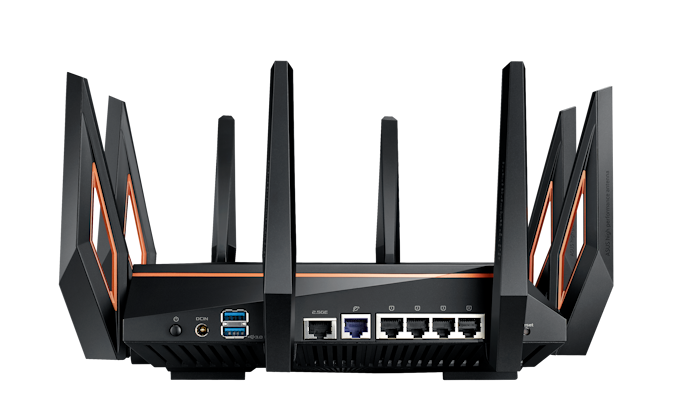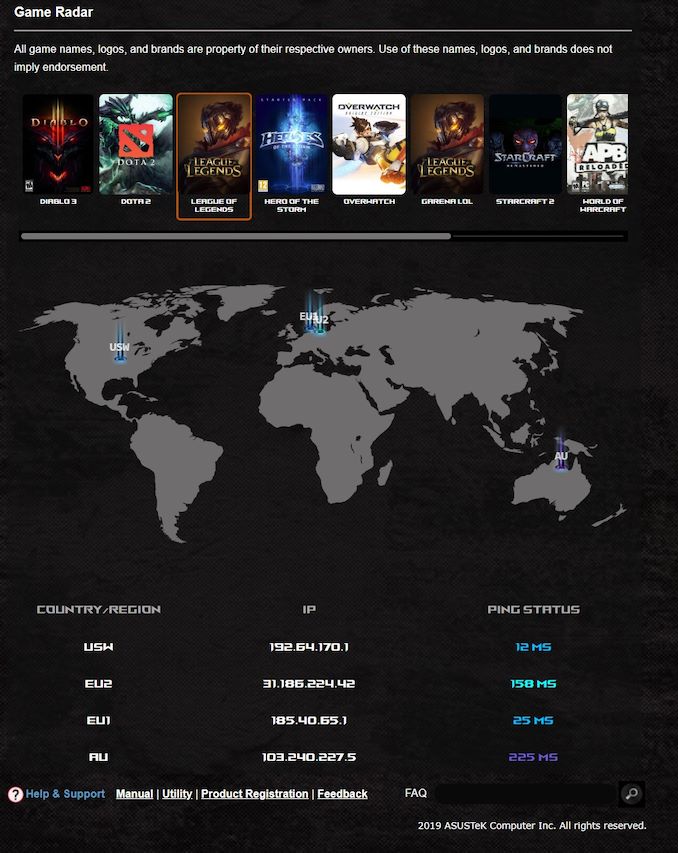AT 101: Wi-Fi 6 And Why You Want It
by Brett Howse on February 12, 2020 8:00 AM ESTThe 2020 AnandTech Wi-Fi Test Bed
We’ve been comfortably using Wi-Fi 5 for some time now, and it is only in the last several months that laptops have been shipping with Wi-Fi 6 based networking, mostly thanks to Intel’s Project Athena which has a requirement of the Intel AX200 Wi-Fi module, which is Intel's first Wi-Fi 6 based module on the market. Previously almost all shipping laptop computers offered Wi-Fi 5, and even a few with the latest Intel wireless adapters such as the Wireless-AC 9260 offered the advanced Wi-Fi 5 options such as 160 Mhz channel width, and MU-MIMO, so its nice to see a move to a new standard which includes these benefits across the board.
Although there are now quite a few Wi-Fi 6 routers and access points on the market, we had some specific criteria to meet. The router had to support Wi-Fi 6, and the 160 MHz channels, but because we are testing for performance, and not for capacity, we need an access point with a multi-Gigabit Ethernet connection. A typical laptop with a 2x2:2 network connection will be connecting to the access point at 2.4 Gbps, so transferring files from Ethernet over Gigabit will be a bottleneck. This does limit the selection somewhat.
After evaluating several models, we decided on the ASUS ROG Rapture GT-AX11000. The name is a mouthful, but meets all of our criteria and more. Most importantly, it offers the coveted 2.5 GbE port.
The ASUS ROG Rapture GT-AX11000
As the name implies, this router from ASUS can support up to 11000 Mbps over wireless, thanks to the 4x4 2.4 GHz, offering 1148 Mbps, and the two 4x4 5 GHz networks each offering 4804 Mbps. This adds up to just under 11000 Mbps, although with wireless the maximum connection speed is pretty much impossible to achieve. With the two separate 5 GHz networks, you can easily split off your consumption devices with higher priority devices, reducing interference on each network.
On the Wide Area Network (WAN) side there is a single 1 Gbps connection, and on the Local Area Network (LAN) side there are four 1 GbE and the single 2.5 GbE connection.
This router is built for capacity, with eight external antennae, and being a gaming router it also offers plenty of RGB lighting options. For those that don’t need the lighting, it can be turned off. ASUS also some tools to change the priority of gaming packets to reduce latency, assuming your network is that busy, and specifically prioritizes traffic from other ROG devices to make setup as easy as possible. ASUS even includes a utility to ping the various game servers for popular multiplayer games to provide you a map of latency to each one.
The GT-AX11000 also integrates with the ASUS AiMesh networking equipment to provide a whole-home mesh network, if even a router of this size can’t cover the entire house, either due to size or building materials blocking the signal.
For testing, the router is used in the access point mode, with the LAN connecting being over the 1 Gbps Ethernet, and a server connected directly to the router in the 2.5 Gbps port.













149 Comments
View All Comments
Samus - Thursday, February 13, 2020 - link
I have yet to see a residential media converter that has >1Gbps throughput, let alone >1Gbps port. I have AT&T Fiber here in Chicago and get 980Mbps\960Mbps from my Gigabit connection and it's mostly bragging rights...no sites, even my private torrent community, can actually feed my connection.Though that could be a limitation of the AT&T backend for residential service. I have no clients in the city with commercial gigabit connections so I have nothing to compare it too.
TheUnhandledException - Friday, February 14, 2020 - link
because in any realistic scenario you aren't going to hit 1 Gps data rate. The 160 MHz tests in the article are next to useless in anything but the most remote scenarios. While Wifi 6 with 160 channels and devices a few feet away can exceed 1 Gbps under any realistic scenario (80 MHz, 15 feet away, wall between device and ap) you are going to be in the 300 to 600 Mbps range.hescominsoon - Friday, February 14, 2020 - link
Because not many folks have multi-gig for their wan connections so the invested the money into a 2.5 gig lan port instead.valinor89 - Wednesday, February 12, 2020 - link
My usual question is, can the WIFI 6 advantages be of use if there are less advanced devices in the same network? It used to be that even if both the AP and Device support the highest standard as long as there exist other devices that use the same network that don't support the new features they end up not usable.haukionkannel - Wednesday, February 12, 2020 - link
Those devices that support Wi-Fi 6 does benefit even if there Also Are those older devices. The router can handle both / all types of trafic at the same time.5080 - Wednesday, February 12, 2020 - link
Make sure your router support DL OFDMA. Some WiFi 6 router need a firmware update to add OFDMA.Makaveli - Wednesday, February 12, 2020 - link
I'm also using an RT-AX88U on Merlin firmware i'm picking up a Galaxy S10 today which is has AX so will be testing that tonight.spamcops - Wednesday, February 12, 2020 - link
I dont want 802.11ax, I want 802.11ayhaukionkannel - Wednesday, February 12, 2020 - link
Just wait some years and you have it!spamcops - Thursday, February 13, 2020 - link
yep, that will be revolution!